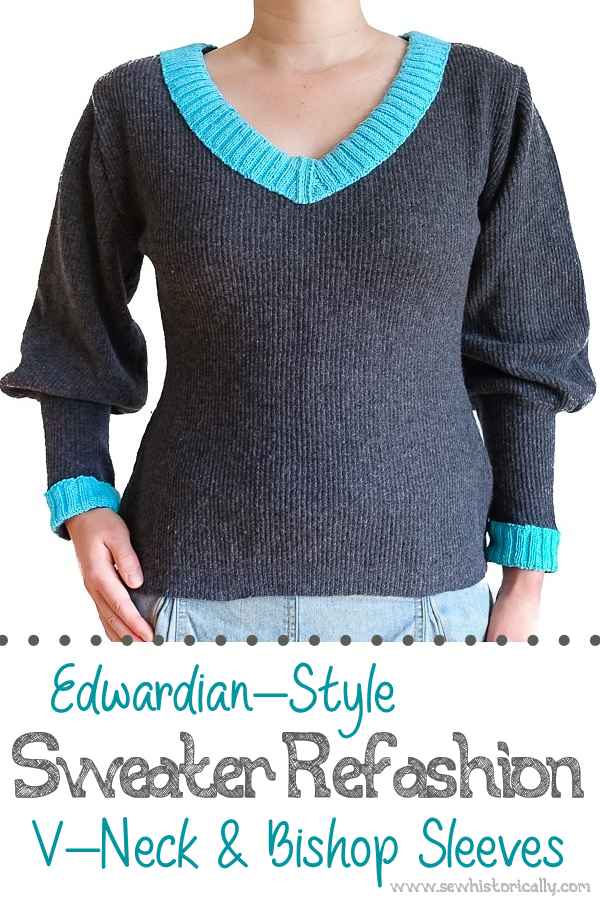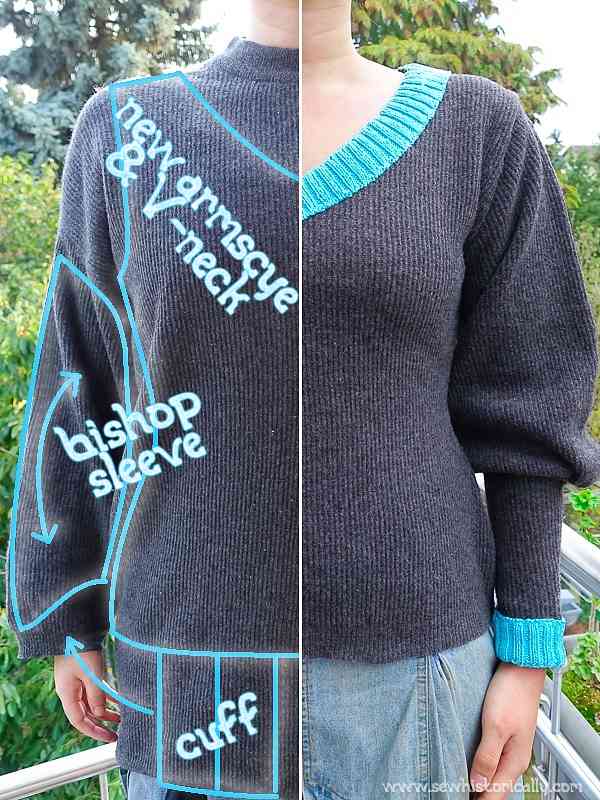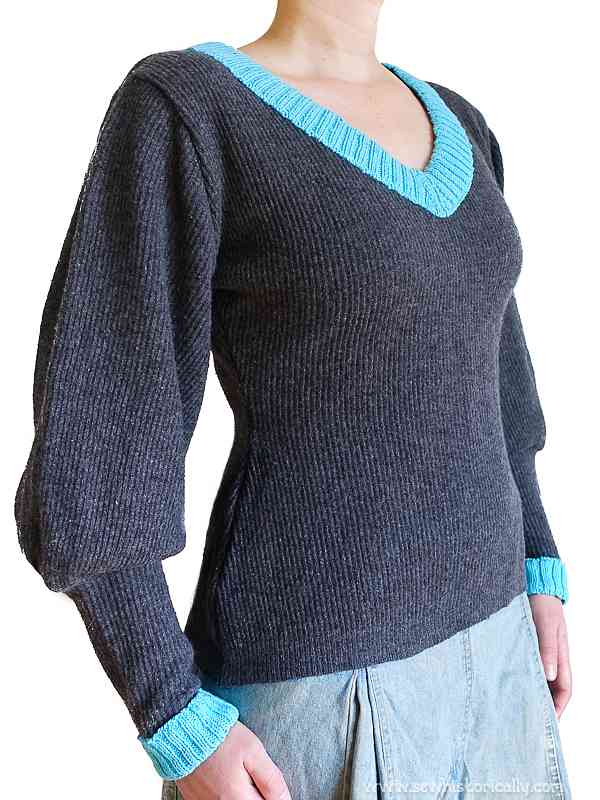Inspired by Edwardian sweaters, I refashioned another modern ill-fitting sweater into an Edwardian-style sweater!
Related: The Edwardian Sweater Girl + 25 Free Edwardian Sweater Patterns
The Sweater – Before
For my DIY sweater refashion, I used an old, dark gray, partly wool sweater. It was just a baggy, oversized sweater. And it wasn’t even a fashionable oversized sweater: It just didn’t fit me at all! Besides, dark gray isn’t my color.
But since it was an 80% wool sweater, I thought I’d turn it into another Edwardian-style sweater. Because I loved how my Edwardian-style sweater that I refashioned last year turned out!
Bishop Sleeves
I used the original sleeves for my refashioned sweater. The sleeves were wide but unusually short so I decided to turn them into elbow-lengths bishop sleeves. Long and elbow-lengths bishop sleeves were very fashionable in the Edwardian era, especially between 1901 and 1904.
Related: 1900-1909 Edwardian Fashion Timeline
But I turned the sleeves around so that the bishop sleeves were as wide as possible at the elbow. So the wrist part of the original sleeves is now at the shoulder. Then I used the leftover fabric of the long sweater to make cuffs.
V-Neck
If you read my blog regularly, you know that I don’t like turtleneck and round neck sweaters. So I turned the round neck into a V-neck! This was a really easy fix.
After cutting the V-neck, I finished the raw edges with a turquoise facing.
Turquoise Trim
Edwardian sweaters often had a contrasting trim at the neck and cuffs: ‘A pleasing touch of color is given to neutral colors by a dash of contrasting shade in the collar, cuffs and girdle.’ (Los Angeles Herald, 1906) ‘Colored bands, pocket flaps and collars are used for trimming white and gray sweaters.’ (San Francisco Call, 1906)
In the Edwardian era, silk taffeta fabric was often used to trim sweaters. But I used a hand-knitted turquoise trim instead. After knitting the trim, I stitched it down with overhand stitches by hand.
In the 1910s, knitted collars and cuffs were used to update old sweaters: ‘It is always the neck and wrist edges that show the first signs of wear […] Have you ever thought of knitting an entirely fresh set of collar and cuffs […] The existing collar and cuffs can quite easily be cut away and the raw edges neatly buttonholed with wool before sewing on the new set. You will probably not be successful in getting wool the exact colour of your jersey, so it will be best to use a striking contrast […]
Another simple way of freshening the neck […] is to work a strip of plain knitting 4 inches wide and 12 inches long, and stretch it along the neck edge. Cuffs can be worked to correspond. A pretty striped effect for this style of finish can be arrived at by using two different shades of wool, and working first four rows of one and then four rows of the other.’ (Needlework Economies, 1919).
The dark gray sweater looks so much better with a splash of turquoise!
More Refashion Details
Besides the neckline and sleeves, I also shortened the long sweater, reshaped the armscyes and turned the oversized sweater into a tight-fitting sweater at the waist and hips.
Zigzagged Seams
Because I don’t have a serger, I simply used a zigzag stitch for all seams which also works perfectly for knitted fabrics. And because knitted fabrics – like sweaters – don’t fray I didn’t finish the raw edges.
Related: Men’s Shirt To Edwardian Blouse Refashion
Please Pin It!



